BLOG - Page 44
Recently created mixtures:

Sea-Buckthorn Macerated oil
February 7, 2019

Home made air freshener
June 29, 2016

Homemade Dog-rose distillate
June 28, 2016

Homemade jasmine distillate
June 22, 2016

Moxibustion treatment with Moxa stick
May 30, 2016

Face and body gentle oil cleanser
May 26, 2016
BLOG / LATEST ADDITIONS!
Incense Burner (Censers) ☸ Tools ☸ Base / General
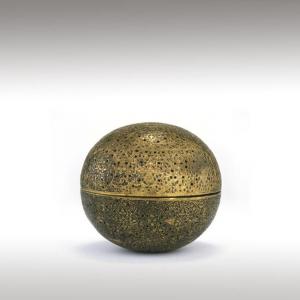

Censers are any type of vessels made for burning Incense.
These vessels vary greatly in size, form, and material of construction.
They may consist of simple earthenware bowls or fire pots to intricately
carved silver or gold vessels, small table top objects a few
centimetres tall to as many as several metres high. In many cultures, burning Incense has spiritual and religious connotations, and this influences the design and decoration of the censer.
Submitted by OperaDreamhouse (April 5, 2014)
Macadamia Oil (Macadamia Integrifolia) ☸ Base oils ☸ Base / General
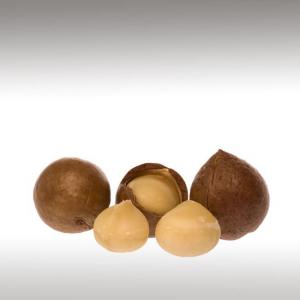

Macadamia is the genus belonging to the family Proteaceae. There are nine species of Macadamia. The only edible species are Integrifolia and Tetrapylla. The other species are poisonous and/or inedible.
Macadamia Integrifolia is a large, spreading, evergreen tree attaining a height of 18 m and a crown of 15 m. Fruit a globose follicle, 2,5 - 4 cm in diameter. Ericarp fibrous, about 3 mm thick. Seed (nut) usually 1, globular, with a smooth, hard, thick (2 - 5 mm testa enclosing the edible kernel).
The nut’s shell is very hard. Cracking it requires a blunt instrument such as a hammer or rock. The nuts are often fed to Hyacinth Macaws in captivity. These large birds are one of the few animals, besides humans, able to crack and shell the nut.
Macadamia oil (or Macadamia Nut oil) is the non-volatile oil expressed from the nut meat of the Macadamia (Macadamia Integrifolia) tree, a native Australian nut.
Macadamia oil is sometimes used in food as a frying or salad oil, and in cosmetic formulations as an emollient or fragrance fixative.
Macadamia Nut oil (Macadamia Integrifolia) is highly stable, to the extent that when used in formulations there is little need for additional anti-oxidants. This is a good choice to improve the anti-oxidant profile of more fragile oils, to prevent oxidation.
The Macadamia tree is native to the Queensland region of Australia, where it is also known as "Bushnut". However, Australians failed to see the commercial potential of this delicious and healthy nut. In 1881 it was brought to Hawaii, where it became very popular and Hawaii soon became the worlds leading producer of this nut.
The aborigines of eastern Australia ate this native nut that grew in the rainforests, thousands of years before European settlers arrived there. The macadamia Integrifolia nut was called Gyndl or Jindilli. In New South Wales the Macadamia Tetraphylla is traditionally known as Boombera.
Macadamia can be easily identified with its golden color. it exhibits a mild nutty sort of fragrance along with sweet undertones.
Macadamia oil is extracted through expeller pressed/unrefined process. In the process are pressed to extract define oil.
Chemical structure:
Macadamia oil containsapproximately 60% oleic acid, 19% palmitoleic acid, 1 - 3% linoleic acid and 1 - 2% α-linolenic acid. Some varieties contain roughly equalomega - 6and omega - 3.
Although Macadamia is cultivated in many different parts of the world, the oil's fatty acid profile is not greatly influenced by environmental factors. The oil displays chemical properties typical of a vegetable triglyceride oil. It is also very stable due to its low polyunsaturated fat content.
Macadamia is the richest oil-yielding nut known. The kernel contains more than 75% oil, suitable for human consumption.
Palmitoleic acid is very close to human sebum, in chemical profile. The absolute best, plant alternative, to animal based oils, this is the oil of choice to replace the activity of Mink oil, and even Shark Liver oil.
Macadamia Integrifolia oil shelf life is 10 - 12 months.
Macadamia nuts are toxic to dogs. Toxicosis may result upon ingestion causing weakness with the inability to stand within 12 hours of this ingestion. Recovery is seen within 48 hours.
Macadamia Integrifolia is a large, spreading, evergreen tree attaining a height of 18 m and a crown of 15 m. Fruit a globose follicle, 2,5 - 4 cm in diameter. Ericarp fibrous, about 3 mm thick. Seed (nut) usually 1, globular, with a smooth, hard, thick (2 - 5 mm testa enclosing the edible kernel).
The nut’s shell is very hard. Cracking it requires a blunt instrument such as a hammer or rock. The nuts are often fed to Hyacinth Macaws in captivity. These large birds are one of the few animals, besides humans, able to crack and shell the nut.
Macadamia oil (or Macadamia Nut oil) is the non-volatile oil expressed from the nut meat of the Macadamia (Macadamia Integrifolia) tree, a native Australian nut.
Macadamia oil is sometimes used in food as a frying or salad oil, and in cosmetic formulations as an emollient or fragrance fixative.
Macadamia Nut oil (Macadamia Integrifolia) is highly stable, to the extent that when used in formulations there is little need for additional anti-oxidants. This is a good choice to improve the anti-oxidant profile of more fragile oils, to prevent oxidation.
The Macadamia tree is native to the Queensland region of Australia, where it is also known as "Bushnut". However, Australians failed to see the commercial potential of this delicious and healthy nut. In 1881 it was brought to Hawaii, where it became very popular and Hawaii soon became the worlds leading producer of this nut.
The aborigines of eastern Australia ate this native nut that grew in the rainforests, thousands of years before European settlers arrived there. The macadamia Integrifolia nut was called Gyndl or Jindilli. In New South Wales the Macadamia Tetraphylla is traditionally known as Boombera.
Macadamia can be easily identified with its golden color. it exhibits a mild nutty sort of fragrance along with sweet undertones.
Macadamia oil is extracted through expeller pressed/unrefined process. In the process are pressed to extract define oil.
Chemical structure:
Macadamia oil containsapproximately 60% oleic acid, 19% palmitoleic acid, 1 - 3% linoleic acid and 1 - 2% α-linolenic acid. Some varieties contain roughly equalomega - 6and omega - 3.
Although Macadamia is cultivated in many different parts of the world, the oil's fatty acid profile is not greatly influenced by environmental factors. The oil displays chemical properties typical of a vegetable triglyceride oil. It is also very stable due to its low polyunsaturated fat content.
Macadamia is the richest oil-yielding nut known. The kernel contains more than 75% oil, suitable for human consumption.
Palmitoleic acid is very close to human sebum, in chemical profile. The absolute best, plant alternative, to animal based oils, this is the oil of choice to replace the activity of Mink oil, and even Shark Liver oil.
Macadamia Integrifolia oil shelf life is 10 - 12 months.
Macadamia nuts are toxic to dogs. Toxicosis may result upon ingestion causing weakness with the inability to stand within 12 hours of this ingestion. Recovery is seen within 48 hours.
Submitted by OperaDreamhouse (March 31, 2014)
Hazelnut Oil (Corylus Avellana) ☸ Base oils ☸ Base / General
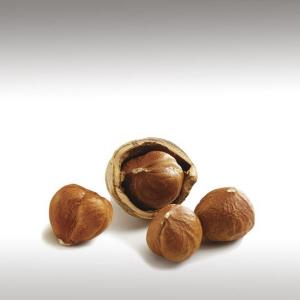

Corylus Avellana, the common Hazel, is a species of Hazel native to Europe and western Asia, from the British Isles south to Iberia, Greece, Turkey and Cyprus, north to central Scandinavia, and east to the central Ural Mountains, the Caucasus, and northwestern Iran.
Hazelnut (Corylus Avellana) is a popular tree nut worldwide, mainly distributed along the coasts of the Black Sea region of Turkey, southern Europe (Italy, Spain, Portugal, and France), and in some areas of the US (Oregon and Washington). Turkey is the world’s largest producer of Hazelnuts.
It is typically a shrub reaching 3 - 8 m tall, but can reach 15 m. The name "Hazelnut" applies to the nuts of any of the species of the genus Corylus. This Hazelnut or Cobnut, the kernel of the seed, is edible and used raw or roasted, or ground into a paste.
The Hazelnut oil is also known as the Cob nut oil or Filbert nut oil.
The Hazelnut oil is fine textured and one of the highly unsaturated vegetable oils. This nut oil is clear with slight yellow tint. It has a faintly nutty aroma, is highly penetrative and is fine textured and is one of the most highly unsaturated vegetable oils. The oil should not be exposed directly to sunlight.
Chemical structure:
Hazelnut oil contains 66-85% oleic acid, 7 - 25% linoleic acid, 4 - 9% palmitic acid and 1 - 6% stearic acid. The Hazel nut oil has some important fatty acids such as oleic, palmitic, stearic, linoleic acids. Glutamic acid was the main amino acid recovered both in un-roasted and roasted flours.
This Hazelnut oil, organic virgin cold-pressed, vegetable oil is close to the organic Sweet Almond oil but has a higher diffusion and penetration capacity. This oil have Vitamins A, B, D and minerals. Hazelnut oil is a warm-pressed oil, high in Vitamin E.
Shelf life: (evaluated up to 6 months) showed that these products are quite stable if stored at room temperature (25°C) in the dark.
Hazelnut (Corylus Avellana) is a popular tree nut worldwide, mainly distributed along the coasts of the Black Sea region of Turkey, southern Europe (Italy, Spain, Portugal, and France), and in some areas of the US (Oregon and Washington). Turkey is the world’s largest producer of Hazelnuts.
It is typically a shrub reaching 3 - 8 m tall, but can reach 15 m. The name "Hazelnut" applies to the nuts of any of the species of the genus Corylus. This Hazelnut or Cobnut, the kernel of the seed, is edible and used raw or roasted, or ground into a paste.
The Hazelnut oil is also known as the Cob nut oil or Filbert nut oil.
The Hazelnut oil is fine textured and one of the highly unsaturated vegetable oils. This nut oil is clear with slight yellow tint. It has a faintly nutty aroma, is highly penetrative and is fine textured and is one of the most highly unsaturated vegetable oils. The oil should not be exposed directly to sunlight.
Chemical structure:
Hazelnut oil contains 66-85% oleic acid, 7 - 25% linoleic acid, 4 - 9% palmitic acid and 1 - 6% stearic acid. The Hazel nut oil has some important fatty acids such as oleic, palmitic, stearic, linoleic acids. Glutamic acid was the main amino acid recovered both in un-roasted and roasted flours.
This Hazelnut oil, organic virgin cold-pressed, vegetable oil is close to the organic Sweet Almond oil but has a higher diffusion and penetration capacity. This oil have Vitamins A, B, D and minerals. Hazelnut oil is a warm-pressed oil, high in Vitamin E.
Shelf life: (evaluated up to 6 months) showed that these products are quite stable if stored at room temperature (25°C) in the dark.
Submitted by OperaDreamhouse (March 31, 2014)
Hazelnut Oil (Corylus Avellana) ☸ Base oils ☸ Beauty / Cosmetics


Suitable for dry, normal, mature, oily, sensitive skin types.
Hazelnut oil is a very popular, all purpose carrier oil. It is used by manufacturers (particularly as a conditioning agent in hair care products), aromatherapists, and massage therapists.
Hazelnut oil is rich in vitamins, minerals and proteins. It is a lovely light oil suitable for skincare and massage. Its astringent properties make it a good choice for young or oily skin types but it is also good for drier skins when blended with richer oils.
It makes the skin soft and is very gentle so can be used with sensitive skins as long as there are no nut allergies. The high oleic acid level of Hazelnut oil gives it remarkable soothing properties and it is also known to regulate sebum secretion.
Hazelnut oil has good astringent qualities (and is said to help maintain the skin's firmness and elasticity), which makes it a superb carrier oil to use on oily and combination skin. It has cell regeneration properties and moisturizing and astringent properties. Hazelnut oil penetrates deep into the skin and is known to help tone and tighten the skin.
Hazelnut oil is heralded as an oil that helps to tone and tighten the skin while strengthening capillaries and assisting in cell regeneration. Tones and tightens skin, helps maintain firmness and elasticity. Helps to strengthen capillaries so might be useful against thread veins. encourages cell regeneration, stimulates circulation.
Hazelnut massage oil has great moisturizing qualities which makes it a good choice to include when mixing a massage oil or preparing a carrier oil blend. It blends well with other massage oils.
Hazelnut oil is a good carrier oil in aromatherapy applications, it has a slightly astringent action that is good for all skin types, but especially for those with oily body skin.
Hazelnut oil does have the ability to filter out some of the suns rays, and you will find it in many suncare, solar products.
Hazelnut oil may be used in bath products, eye makeup and skin and hair care products. It is also effective to restore the hair's tonicity and sanitize the scalp.
Hazelnut has a mild scent and is the perfect base oil for creams and skin preparations. Contains oleic acid and a small proportion of linoleic acid.
Hazelnut oil may be used in bath and eye makeup products.
Hazelnut oil is a very popular, all purpose carrier oil. It is used by manufacturers (particularly as a conditioning agent in hair care products), aromatherapists, and massage therapists.
Hazelnut oil is rich in vitamins, minerals and proteins. It is a lovely light oil suitable for skincare and massage. Its astringent properties make it a good choice for young or oily skin types but it is also good for drier skins when blended with richer oils.
It makes the skin soft and is very gentle so can be used with sensitive skins as long as there are no nut allergies. The high oleic acid level of Hazelnut oil gives it remarkable soothing properties and it is also known to regulate sebum secretion.
Hazelnut oil has good astringent qualities (and is said to help maintain the skin's firmness and elasticity), which makes it a superb carrier oil to use on oily and combination skin. It has cell regeneration properties and moisturizing and astringent properties. Hazelnut oil penetrates deep into the skin and is known to help tone and tighten the skin.
Hazelnut oil is heralded as an oil that helps to tone and tighten the skin while strengthening capillaries and assisting in cell regeneration. Tones and tightens skin, helps maintain firmness and elasticity. Helps to strengthen capillaries so might be useful against thread veins. encourages cell regeneration, stimulates circulation.
Hazelnut massage oil has great moisturizing qualities which makes it a good choice to include when mixing a massage oil or preparing a carrier oil blend. It blends well with other massage oils.
Hazelnut oil is a good carrier oil in aromatherapy applications, it has a slightly astringent action that is good for all skin types, but especially for those with oily body skin.
Hazelnut oil does have the ability to filter out some of the suns rays, and you will find it in many suncare, solar products.
Hazelnut oil may be used in bath products, eye makeup and skin and hair care products. It is also effective to restore the hair's tonicity and sanitize the scalp.
Hazelnut has a mild scent and is the perfect base oil for creams and skin preparations. Contains oleic acid and a small proportion of linoleic acid.
Hazelnut oil may be used in bath and eye makeup products.
Submitted by OperaDreamhouse (March 31, 2014)
Walnut Oil (Juglans Regia) ☸ Base oils ☸ Base / General
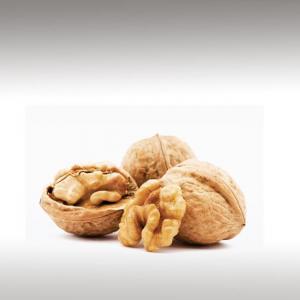

The Walnut tree originated from a large area going from Central Asia down to the Indian Peninsula and spread westwards to Europe and eastwards to China. Walnut, the fruit of the walnut tree (Juglans Regia), has been used in human nutrition since ancient times and walnut trees were cultivated in Europe as early as 1000 BC.
The Walnut tree is a deciduous medium-sized to tall tree that can reach up to 45 m. The fruit is spherical drupe with a green fleshy husk that opens at maturity to reveal a nut. The nut consists of a hard lignified shell containing a wrinkled kernel made up of two halves separated by a partition.
Unrefined Walnut oil is made from nuts that are dried and then cold-pressed. Good quality Walnut oil is topaz in colour with a rich nutty taste. Walnut oil is oil extracted from English Walnuts (also known as Persian Walnuts). Most Walnut oil is produced in France, though there are also producers in Australia, New Zealand and California. Walnut trees have been cultivated in Europe since Roman times for both culinary and cosmetic uses.
Walnut oil was one of the most important oils used by Renaissance painters. Its short drying time and lack of yellow tint make it a good oil paint base thinner and brush cleaner.
Chemical structure:
Walnuts are rich in phytonutrients and are an excellent source of selenium, phosphorous, magnesium, zinc, iron, and calcium.
The Walnut tree is a deciduous medium-sized to tall tree that can reach up to 45 m. The fruit is spherical drupe with a green fleshy husk that opens at maturity to reveal a nut. The nut consists of a hard lignified shell containing a wrinkled kernel made up of two halves separated by a partition.
Unrefined Walnut oil is made from nuts that are dried and then cold-pressed. Good quality Walnut oil is topaz in colour with a rich nutty taste. Walnut oil is oil extracted from English Walnuts (also known as Persian Walnuts). Most Walnut oil is produced in France, though there are also producers in Australia, New Zealand and California. Walnut trees have been cultivated in Europe since Roman times for both culinary and cosmetic uses.
Walnut oil was one of the most important oils used by Renaissance painters. Its short drying time and lack of yellow tint make it a good oil paint base thinner and brush cleaner.
Chemical structure:
Walnuts are rich in phytonutrients and are an excellent source of selenium, phosphorous, magnesium, zinc, iron, and calcium.
Walnuts and Walnut oil provide hefty levels of Vitamins B-1, B-2, and B-3, coupled with Vitamin-E and niacin.
It is about 22,2% monosaturated oleic acid, an omega-9 fatty acid, 52,9% linoleic acid, an essential polyunsaturated omega-6 fatty acid, and 10,4% alpha linolenic acid, which supplies the body with needed omega-3 fatty acids, another form of polyunsaturated fatty acid essential to human nutrition.
It is about 22,2% monosaturated oleic acid, an omega-9 fatty acid, 52,9% linoleic acid, an essential polyunsaturated omega-6 fatty acid, and 10,4% alpha linolenic acid, which supplies the body with needed omega-3 fatty acids, another form of polyunsaturated fatty acid essential to human nutrition.
Submitted by OperaDreamhouse (March 31, 2014)
Jojoba Oil (Simmondsia Chinensis) ☸ Base oils ☸ Base / General
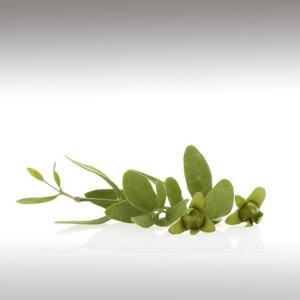

Jojoba oil is the liquid produced in the seed of the Simmondsia Chinensis (Jojoba) plant, a shrub, which is native to southern Arizona, southern California, and northwestern Mexico. Theoil makes up approximately 50% of the Jojoba seed by weight. Jojoba oil is obtained by “pressing” the Jojoba seeds.
Jojoba (Simmondsia Chinensis) is generally classified as non-toxic or harmful.
Legend has it that the Native Americans used Jojoba oil for a variety of purposes, ranging from hair conditioners, to skin lubricants to even making coffee-like beverages.
Unrefined Jojoba oil appears as a clear golden liquid at room temperature with a slightly nutty odor.
An equal number of male and female flowers are borne on separate plants. The plant can withstand extreme daily fluctuations of temperature and thrives in well-drained, desert soils and coarse mixtures of gravel and clay. The mature plant produces about 5 to 10 pounds of seeds, which range in size between the Coffee bean and Peanut. It is an important forage plant for desert bighorn sheep and mule deer.
Jojoba oil is derived from the seeds (beans) within the fruits. This oil, classified as a wax, is easily absorbed by the skin.
Thefemale variety of the plant produces a fruit, which in turn bears a seed containing a liquid Wax. This oily Wax is similar to vegetable oil, and is considered “unusually purea": it contains essentially all-wax esters, Vitamin E, andphospholipids. It also has an incredibly long shelf life.
Very stable - Jojoba oil does not become rancid or lose antioxidants even after long periods of storage. The melting point of Jojoba oil is approximately 10°C and the iodine value is approximately 80. Jojoba oil is relatively shelf-stable when compared with other vegetable oils mainly because it does not contain triglycerides, unlike most other vegetable oils such as Grape Seed oil and Coconut oil. It has an oxidative stability index of approximately 60, which means that it is more shelf-stable than Safflower oil, Canola oil, Almond oil or Squalene but less than Castor oil and Coconut oil.
Jojoba oil is used as a replacement for Whale oil and its derivatives, such as cetyl alcohol. The ban on importing whale oil to the US in 1971 led to the discovery that Jojoba oil is "in many regards superior to Sperm oil for applications in the cosmetics and other industries".
Jojoba (Simmondsia Chinensis) is generally classified as non-toxic or harmful.
Jojoba oil have light to medium, distinct but pleasant aroma and thisoil is golden yellow in color.
Jojoba (Simmondsia Chinensis) is generally classified as non-toxic or harmful.
Legend has it that the Native Americans used Jojoba oil for a variety of purposes, ranging from hair conditioners, to skin lubricants to even making coffee-like beverages.
Unrefined Jojoba oil appears as a clear golden liquid at room temperature with a slightly nutty odor.
An equal number of male and female flowers are borne on separate plants. The plant can withstand extreme daily fluctuations of temperature and thrives in well-drained, desert soils and coarse mixtures of gravel and clay. The mature plant produces about 5 to 10 pounds of seeds, which range in size between the Coffee bean and Peanut. It is an important forage plant for desert bighorn sheep and mule deer.
Jojoba oil is derived from the seeds (beans) within the fruits. This oil, classified as a wax, is easily absorbed by the skin.
Thefemale variety of the plant produces a fruit, which in turn bears a seed containing a liquid Wax. This oily Wax is similar to vegetable oil, and is considered “unusually purea": it contains essentially all-wax esters, Vitamin E, andphospholipids. It also has an incredibly long shelf life.
Very stable - Jojoba oil does not become rancid or lose antioxidants even after long periods of storage. The melting point of Jojoba oil is approximately 10°C and the iodine value is approximately 80. Jojoba oil is relatively shelf-stable when compared with other vegetable oils mainly because it does not contain triglycerides, unlike most other vegetable oils such as Grape Seed oil and Coconut oil. It has an oxidative stability index of approximately 60, which means that it is more shelf-stable than Safflower oil, Canola oil, Almond oil or Squalene but less than Castor oil and Coconut oil.
Jojoba oil is used as a replacement for Whale oil and its derivatives, such as cetyl alcohol. The ban on importing whale oil to the US in 1971 led to the discovery that Jojoba oil is "in many regards superior to Sperm oil for applications in the cosmetics and other industries".
Jojoba (Simmondsia Chinensis) is generally classified as non-toxic or harmful.
Jojoba oil have light to medium, distinct but pleasant aroma and thisoil is golden yellow in color.
Submitted by OperaDreamhouse (March 31, 2014)
Jojoba Oil (Simmondsia Chinensis) ☸ Base oils ☸ Beauty / Cosmetics


Good for all skin types ( very good for acne, dry and aging skin tipes)
Jojoba oil few of many qualities for skin are reducingwrinklesand lightening skin marks, scars and stretch marks. For actual skin ailments such as acne, inflammation of the skin, Jojoba oil is very useful because it balances properties of the skin and moisturizes it naturally with its Sebum oil which is identical to Sebum oil produced by human skin.
In particular, such products commonly containing Jojoba are lotions and moisturizers, hair shampoos and conditioners. Or, the pure oil itself may be used on skin, hair, or cuticles.
Jojoba oil has many qualities in helping the skin cells reserve and retain moisture. It is very gentle and so it suits all types of skin even the most sensitive. It can effectively penetrate the skin easily to improve flexibility and elasticity.
Jojoba oil is useful for many conditions: it is useful for treating both excessive sebum production (oily skin and/or acne) because it can dissolve the Sebum, as well as underproduction, such as dry skin, dandruff or other dry skin conditions like eczema and psoriasis.
Simmondsia Chinensis a good emollient choice for use in cosmetics and is suitable for dry, sensitve, and acne-prone skin types.
Jojoba oil is great for all hair types. Conversely, it can also be used to remove excess Sebum and product buildup on hair. It is also used topically to encourage the regrowth of hair in people who are balding.
This oil acts as a natural anti-inflammatory and is a good choice for use in massage and for inflamed skin. It has a nourishing properties also.
Since Jojoba oil is not an eye irritant, nor allergenic, you can use it to remove eye makeup. It also easily removes foundation, blush, and lipstick.
Jojoba oil good for:
Massage oil
After-sun moisturizer
Stretch mark treatment
Sebum substitute
As a way to remove hair product residue
Cleanser
Treating acne and cold sores
Scalp and hair moisturizer
Hair detangler
As a nightly facial moisturizer
As an after-shower body moisturizer
As makeup remover
As a lip balm
As dried cuticle treatment
As a shaving prepper.
Jojoba oil few of many qualities for skin are reducingwrinklesand lightening skin marks, scars and stretch marks. For actual skin ailments such as acne, inflammation of the skin, Jojoba oil is very useful because it balances properties of the skin and moisturizes it naturally with its Sebum oil which is identical to Sebum oil produced by human skin.
In particular, such products commonly containing Jojoba are lotions and moisturizers, hair shampoos and conditioners. Or, the pure oil itself may be used on skin, hair, or cuticles.
Jojoba oil has many qualities in helping the skin cells reserve and retain moisture. It is very gentle and so it suits all types of skin even the most sensitive. It can effectively penetrate the skin easily to improve flexibility and elasticity.
Jojoba oil is useful for many conditions: it is useful for treating both excessive sebum production (oily skin and/or acne) because it can dissolve the Sebum, as well as underproduction, such as dry skin, dandruff or other dry skin conditions like eczema and psoriasis.
Simmondsia Chinensis a good emollient choice for use in cosmetics and is suitable for dry, sensitve, and acne-prone skin types.
Jojoba oil is great for all hair types. Conversely, it can also be used to remove excess Sebum and product buildup on hair. It is also used topically to encourage the regrowth of hair in people who are balding.
This oil acts as a natural anti-inflammatory and is a good choice for use in massage and for inflamed skin. It has a nourishing properties also.
Since Jojoba oil is not an eye irritant, nor allergenic, you can use it to remove eye makeup. It also easily removes foundation, blush, and lipstick.
Jojoba oil good for:
Massage oil
After-sun moisturizer
Stretch mark treatment
Sebum substitute
As a way to remove hair product residue
Cleanser
Treating acne and cold sores
Scalp and hair moisturizer
Hair detangler
As a nightly facial moisturizer
As an after-shower body moisturizer
As makeup remover
As a lip balm
As dried cuticle treatment
As a shaving prepper.
Submitted by OperaDreamhouse (March 31, 2014)
Sunflower Oil (Helianthus Annuus) ☸ Base oils ☸ Base / General
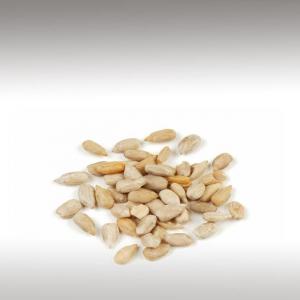

Sunflower has been cultivated by Native Americans for centuries. They used the plant for dietary, medicinal, and decorative purposes. Helianthus Annuus Seed oil is the oil expressed from the seeds of the Sunflower, Helianthus Annuus, Compositae.
Sunflower seed oil comes from Sunflower seeds. The Sunflower is extracted using a cold press expeller method, which is essentially squeezing raw materials under high pressure until all the oily goodness is squished out.
Sunflower oil was first industrially produced in 1835 in the Russian Empire. The world's largest Sunflower oil producers now are Ukraine, Russia and Argentina.
It is a relatively lightweight oil that is best obtained through the cold press processing of Sunflower seeds.
Chemical structure:
Sunflower oil is light in taste and appearance and supplies more Vitamin E than any other vegetable oil. It is a combination of monounsaturated and polyunsaturated fats with low saturated fatlevels. The oil contains appreciable quantities of Vitamin E, sterols, Squalene, and other aliphatic hydrocarbons, terpene andmethyl ketones (chiefly methyl nonyl ketone).
Sunflower oil is a monounsaturated / polyunsaturated mixture of mostly oleic acid (omega - 9), linoleic acid (omega-6) group of oils. The oil content of the seed ranges from 22 to 36% (average, 28%): the kernel contains 45 - 55% oil.
Sunflower oil also contains lecithin, tocopherols, carotenoids and waxes. Sunflower oil's properties are typical of a vegetable triglyceride oil. Sunflower oil is produced from oil type Sunflower seeds. Sunflower oil is light in taste and appearance.
Palmitic acid (saturated): 5%
Stearic acid (saturated): 6%
Oleic acid (monounsaturated omega - 9): 30%
Linoleic acid (polyunsaturated omega - 6): 59%
Sunflower seed oil comes from Sunflower seeds. The Sunflower is extracted using a cold press expeller method, which is essentially squeezing raw materials under high pressure until all the oily goodness is squished out.
Sunflower oil was first industrially produced in 1835 in the Russian Empire. The world's largest Sunflower oil producers now are Ukraine, Russia and Argentina.
It is a relatively lightweight oil that is best obtained through the cold press processing of Sunflower seeds.
Chemical structure:
Sunflower oil is light in taste and appearance and supplies more Vitamin E than any other vegetable oil. It is a combination of monounsaturated and polyunsaturated fats with low saturated fatlevels. The oil contains appreciable quantities of Vitamin E, sterols, Squalene, and other aliphatic hydrocarbons, terpene andmethyl ketones (chiefly methyl nonyl ketone).
Sunflower oil is a monounsaturated / polyunsaturated mixture of mostly oleic acid (omega - 9), linoleic acid (omega-6) group of oils. The oil content of the seed ranges from 22 to 36% (average, 28%): the kernel contains 45 - 55% oil.
Sunflower oil also contains lecithin, tocopherols, carotenoids and waxes. Sunflower oil's properties are typical of a vegetable triglyceride oil. Sunflower oil is produced from oil type Sunflower seeds. Sunflower oil is light in taste and appearance.
Palmitic acid (saturated): 5%
Stearic acid (saturated): 6%
Oleic acid (monounsaturated omega - 9): 30%
Linoleic acid (polyunsaturated omega - 6): 59%
Submitted by OperaDreamhouse (March 28, 2014)
Ghassoul (Rhassoul) Clay ☸ Ingredients ☸ Base / General
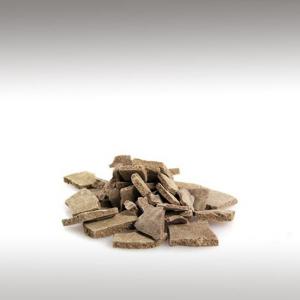

The Rhassoul or Ghassoul is a natural mineral clay mined in the Atlas
Mountains of Morocco since the eighth century. It is combined with water
to clean the body and has been used by Moroccan women for centuries to
care for their skin and hair. Rhassoul contains silicon, iron, magnesium, potassium, sodium, lithium and trace elements.
Today, Rhassoul is used in Turkish baths. Along with a glove, or "Kessa", Rhassoul is used as a facial mask and poultice to the body. It is similar to a western style mud wrap. It is intended to soften the skin, reduce sebum secretion, regenerate the skin by removing dead cells, and rebalance the skin by tightening the pores.
Today, Rhassoul is used in Turkish baths. Along with a glove, or "Kessa", Rhassoul is used as a facial mask and poultice to the body. It is similar to a western style mud wrap. It is intended to soften the skin, reduce sebum secretion, regenerate the skin by removing dead cells, and rebalance the skin by tightening the pores.
Submitted by OperaDreamhouse (March 14, 2014)
Aloe Vera (Aloe Barbadensis) ☸ Ingredients ☸ Base / General
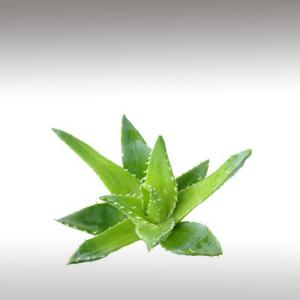

Aloe Vera is a succulent plant species that is found only in cultivation, having no naturally occurring populations, although closely related aloes do occur in northern Africa.
The species is frequently cited as being used in herbal medicine since the beginning of the first century AD. Extracts from Aloe Vera are widely used in the cosmetics and alternative medicine industries, being marketed as variously having rejuvenating, healing, or soothing properties.
The leaves are thick and fleshy, green to grey-green, with some varieties showing white flecks on their upper and lower stem surfaces. The margin of the leaf is serrated and has small white teeth. Plant is growing in temperate and tropical regions of Australia, Barbados, Belize, Nigeria, Paraguay, Mexico and the US States of Florida, Arizona and Texas.
Aloe has a nauseating bitter taste, rendering it unusable in cooking, but this very property protects it in the wild as animals will move on to tastier treats. It is an easy plant to grow and requires little care other than protecting it from frost.
6000 year old stone carvings in Egypt contain images of the plant, which they referred to as the "Plant of Immortality". It was given as a burial gift to deceased pharaohs.
The virtues of Aloe Vera have been recorded for thousands of years by many ancient civilizations, including Egypt, Persia, Greece, India and Africa. The name was derived from the Arabic alloeh meaning "Bitter" because of the bitter liquid found in the leaves. It is also known as "Lily of the Desert", the "Plant of Immortality", and the "Medicine Plant".
Aloe Vera is used in traditional medicine as a multipurpose skin treatment. In Ayurvedic medicine it is called "Kathalai". Early records of Aloe Vera use appear in the Ebers Papyrus from the 16th century BC. It is also written of in the Juliana Anicia Codex of 512 AD.
Preparations made from Aloe Vera are often referred to as "Aloe Vera". Scientific evidence for the cosmetic and therapeutic effectiveness of aloe vera is limited and when present is frequently.
Chemical structure:
Although Aloe is about 99% water, the remaining 1% is extremely powerful and it is thought this is because the close to 100 ingredients work extremely well together (synergistically).
Aloe Vera contains many minerals vital to the growth process and healthy function of all the body's systems. The ingredients in Aloe can be grouped into the following categories: Vitamins, minerals, sugars, enzymes, lignins, amino acids, anthraquinones, saponins, fatty acids, salicylic acid.
Aloe vera contains:
Aloe-emodin
Aloins, Barbaloin and Isobarbaloin
Amino acids
Amorphous Aloin
Approximately 96% water
Enzymes
Essential fatty acids (anti-inflammatory).
Essential oil
Galactomannans (long chain sugars derived from plants)
Glycoproteins (protein-carbohydrate compounds that speed the healing process by stopping pain and inflammation)
Minerals
Polysaccharides (a type of carbohydrate that stimulates skin growth and repair)
Resin
Vitamin C
Vitamin E
Zinc
Aloe Vera (Aloe Barbadensis) is a succulent plant that is cultivated all over the world for its thick gelatinous leaves. When the leaves are cut, a clear viscous substance can be pressed or filleted out of the Aloe leaf.
The species is frequently cited as being used in herbal medicine since the beginning of the first century AD. Extracts from Aloe Vera are widely used in the cosmetics and alternative medicine industries, being marketed as variously having rejuvenating, healing, or soothing properties.
The leaves are thick and fleshy, green to grey-green, with some varieties showing white flecks on their upper and lower stem surfaces. The margin of the leaf is serrated and has small white teeth. Plant is growing in temperate and tropical regions of Australia, Barbados, Belize, Nigeria, Paraguay, Mexico and the US States of Florida, Arizona and Texas.
Aloe has a nauseating bitter taste, rendering it unusable in cooking, but this very property protects it in the wild as animals will move on to tastier treats. It is an easy plant to grow and requires little care other than protecting it from frost.
6000 year old stone carvings in Egypt contain images of the plant, which they referred to as the "Plant of Immortality". It was given as a burial gift to deceased pharaohs.
The virtues of Aloe Vera have been recorded for thousands of years by many ancient civilizations, including Egypt, Persia, Greece, India and Africa. The name was derived from the Arabic alloeh meaning "Bitter" because of the bitter liquid found in the leaves. It is also known as "Lily of the Desert", the "Plant of Immortality", and the "Medicine Plant".
Aloe Vera is used in traditional medicine as a multipurpose skin treatment. In Ayurvedic medicine it is called "Kathalai". Early records of Aloe Vera use appear in the Ebers Papyrus from the 16th century BC. It is also written of in the Juliana Anicia Codex of 512 AD.
Preparations made from Aloe Vera are often referred to as "Aloe Vera". Scientific evidence for the cosmetic and therapeutic effectiveness of aloe vera is limited and when present is frequently.
Chemical structure:
Although Aloe is about 99% water, the remaining 1% is extremely powerful and it is thought this is because the close to 100 ingredients work extremely well together (synergistically).
Aloe Vera contains many minerals vital to the growth process and healthy function of all the body's systems. The ingredients in Aloe can be grouped into the following categories: Vitamins, minerals, sugars, enzymes, lignins, amino acids, anthraquinones, saponins, fatty acids, salicylic acid.
Aloe vera contains:
Aloe-emodin
Aloins, Barbaloin and Isobarbaloin
Amino acids
Amorphous Aloin
Approximately 96% water
Enzymes
Essential fatty acids (anti-inflammatory).
Essential oil
Galactomannans (long chain sugars derived from plants)
Glycoproteins (protein-carbohydrate compounds that speed the healing process by stopping pain and inflammation)
Minerals
Polysaccharides (a type of carbohydrate that stimulates skin growth and repair)
Resin
Vitamin C
Vitamin E
Zinc
Aloe Vera (Aloe Barbadensis) is a succulent plant that is cultivated all over the world for its thick gelatinous leaves. When the leaves are cut, a clear viscous substance can be pressed or filleted out of the Aloe leaf.
Submitted by OperaDreamhouse (March 14, 2014)
Rosemary Leaf CO2 (Extract) (Rosmarinus Officinalis) ☸ Ingredients ☸ Base / General
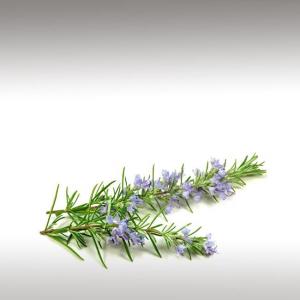
 Rosmarinus Officinalis, commonly known as Rosemary, is a woody,
perennial herb with fragrant, evergreen, needle-like leaves and white,
pink, purple, or blue flowers, native to the Mediterranean region.
Rosmarinus Officinalis, commonly known as Rosemary, is a woody,
perennial herb with fragrant, evergreen, needle-like leaves and white,
pink, purple, or blue flowers, native to the Mediterranean region.It is a member of the Mint family Lamiaceae, which includes many otherherbs. The name "Rosemary" derives from the Latin for "Dew" (Ros) and "Sea" (Marinus), or "Dew of the sea". The plant is also sometimes called Anthos, from the ancient Greek Rosmarinus meaning "Flower".
Submitted by OperaDreamhouse (March 14, 2014)
Beeswax (Cera Alba) ☸ Ingredients ☸ Base / General
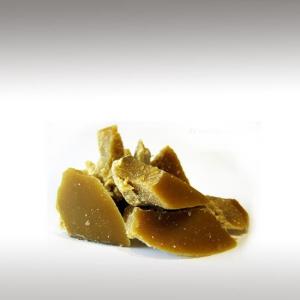
 Beeswax is a natural Wax produced in the Bee hive of Honey Bees of the genus Apis. It is mainly esters of fatty acids and various long-chain alcohols.
Beeswax is a natural Wax produced in the Bee hive of Honey Bees of the genus Apis. It is mainly esters of fatty acids and various long-chain alcohols.The Wax is formed by worker Bees, which secrete it from eight wax-producing mirror glands on the inner sides of the sternites (the ventral shield or plate of each segment of the body). The Wax of Honeycomb is nearly white, but becomes progressively more yellow or brown by incorporation of Pollen oils and Propolis.
1 kg Wax can be harvested from a colony with 30 - 70,000 bees. When freshly secreted, Beeswax is white and colorless.
Honey Bees use the Beeswax to build honeycomb cells in which their young are raised with honey and pollen cells being capped for storage. For thewax-making bees to secrete Wax, the ambient temperature in the hive must be 33 to 36 °C.
When beekeepers extract the Honey, they cut off the Wax caps from each honeycomb cell with an uncapping knife or machine. The Wax may further be clarified by heating in water. As with petroleum Waxes, it may be softened by dilution with vegetable oil to make it more workable at room temperature.
Candle-making has long involved the use of Beeswax, which is highly flammable, and this material traditionally was prescribed, for the making of the Paschal Candle or "Easter Candle". It is further recommended for the making of other candles used in the liturgy of the Roman Catholic Church. Beeswax is also the candle constituent of choice in the Orthodox Church.
Modeling Waxes can also use Beeswax as a component. Pure Beeswax can also be used as an organic surfboard Wax.
Beewax is very important in Eastern Europe eggs decoration art : it is used for writing, via resist dyeing, on Batik eggs (as in pysanky) and for making beaded eggs.
Chemical structure:
An approximate chemical formula for Beeswax is C15 H31 COOC30 H61.
Beeswax never goes bad and can be heated and reused.
The three main types of Beeswax products are yellow, white and Beeswax absolute. Yellow Beeswax is the crude product obtained from the honeycomb, White Beeswax is bleached Yellow Beeswax, and Beeswax absolute is Yellow Beeswax treated with alcohol. In food preparation, it is used as a coating for cheese; by sealing out the air, protection is given against spoilage.
Beeswax may also be used as a food additive E901, in small quantities acting as a (glazing agent), which serves to prevent water loss, or used to provide surface protection for some fruits.
Beeswax is also a common ingredient of natural chewing gum.
Submitted by OperaDreamhouse (March 14, 2014)
Champaca Distillate (Michelia Champaca) ☸ Herbal distillates ☸ Base / General
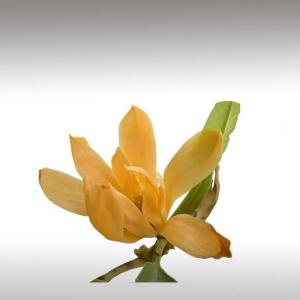
 It is best known for its strongly fragrant yellow or white flowers. It is, however, primarily cultivated for its timber, and is also used in urban landscaping. Its aril-covered seeds are highly attractive to birds. This species occurs in varying shades of cream to yellow-orange. In China, Magnolia champaca var. pubinervia is documented. Magnolia × alba is a hybrid cultivar of Magnolia champaca. In Thailand, there has been some purported man-made hybrids with other magnolia species including Magnolia liliifera and Magnolia coco.
It is best known for its strongly fragrant yellow or white flowers. It is, however, primarily cultivated for its timber, and is also used in urban landscaping. Its aril-covered seeds are highly attractive to birds. This species occurs in varying shades of cream to yellow-orange. In China, Magnolia champaca var. pubinervia is documented. Magnolia × alba is a hybrid cultivar of Magnolia champaca. In Thailand, there has been some purported man-made hybrids with other magnolia species including Magnolia liliifera and Magnolia coco.Submitted by OperaDreamhouse (March 13, 2014)
Jasmine (White Mallika) Distillate (Jasminum Sambac) ☸ Herbal distillates ☸ Base / General
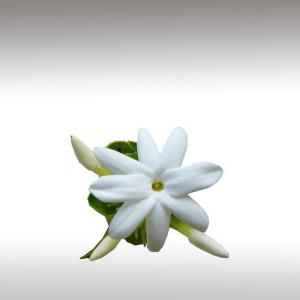

The flowers are also used for perfumes and for making tea. It is known as the Arabian Jasmine in English. It is the national flower of the Philippines, where it is known as Sampaguita. It is also one of the three national flowers of Indonesia, where it is known as Melati Putih.
Despite the English common name of "Arabian Jasmine", Jasminum Sambac is not originally native to Arabia. The habits of Jasminum Sambac support a native habitat of humid tropical climates and not the arid climates of the Middle East.
Despite the English common name of "Arabian Jasmine", Jasminum Sambac is not originally native to Arabia. The habits of Jasminum Sambac support a native habitat of humid tropical climates and not the arid climates of the Middle East.
Early Chinese records of the plant points to the origin of Jasminum Sambac as eastern South Asia and Southeast Asia. Jasminum Sambac (and nine other species of the genus) were spread into Arabia and Persia by man, where they were cultivated in gardens. From there, they were introduced to Europe where they were grown as ornamentals and were known under the common name "Sambac" in the 18th century.
White Mallika is not only an amazing flower, but also a complex, developed cultural and philosophical phenomenon.
Submitted by OperaDreamhouse (March 13, 2014)
Lavender Distillate (Lavandula Angustifolia) ☸ Herbal distillates ☸ Base / General
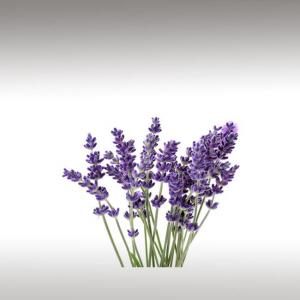

Organic Lavender Hydrosol smells slightly different from the herb and essential oil. It is lighter and somewhat earthier in fragrance and doesn't possess the camphorous note that many Lavender essential oils have.
Lavender (Lavandula Angustifolia) is a strongly aromatic shrub with pale green, narrow, linear leaves and violet - blue flowers. Native to the low mountains of the Mediterranean region, now is cultivated all over the world for its essential oil.
The influence of the time of distillation on the content and composition of the essential oil isolated from lavender (Lavandula Angustifolia) by steam distillation was investigated. The maximum essential oil percentage (2%) was obtained after 2 hours of distillation, while the minimum essential oil percentage (1%) was obtained after 40 minutes of distillation.
Lavender oil is easily extracted from the flower heads using steam distillation. The best effect of distillation time on Lavender essential oil yield and composition when extracted from dried flowers.
If the time of distillation is too short, higher boiling point compounds may be lacking. When the time of distillation is too long, the oil may have unpleasant smell.
According to Pitman, nearly 75% of the total oil yield comes in the first 25 minutes of distillation, to give a commercial grade Lavender oil. Obtaining of the othermolecules, like coumarins, take another 50 - 80 minutes of distillation.
Steam distillation is a simple method of universal application and the inexpen - sive equipment. Unfortunately, during this process molecular rearrangements, hydrolysisof double bonds and de - esterification of esters to alcohols and carbo - xylic acids may occurs.
In case of Lavender oil, the levels of linalool and linalyl ace - tate are key determinants of the overall fragrance of the oil. Linalool is sweeter, but the odour of its ester, linalyl acetate is more refreshing. The linalool to linalyl acetate ratio may change in different distillation times and may affect the final odour of the oil.
According to literature data, in high quality Lavender oil, the ratio of linalyl acetate to linalool should be higher than one. Commercially produced Lavender oil is often distilled for only 15 minutes at a very high temperature and under very high pressure. Although the oil is easily sold, it is of very poor quality. In order to make it smell like the genuine plantfragrance, synthetic linalyl acetate is often added.
Distillation is conducted by boiling the water beneath the charge with steam brought from a boiler to a coil, the top of which must be at least 1 foot beneath the bottom of the charge chamber. The oil flow from the condenser must be watched for, and complete distillation of the charge usually takes about six hours from commencement of the flow.
The yield of the oil is apt to vary considerably from season to season, as the age of the bushes and the weather will affect both the quantity and quality of the product. The amount of sunlight in the weeks before distillation has a great influence: the best oil is obtained after a hot, droughty season, heavy rains detract from the yield.
The Distillate should be left for several months to become quite clear and transparent before it is offered for sale. At Hitchin, it has been calculated that 60 lb. of good flowers will yield on the average 16 fluid ounces of oil.
Growers not doing their own distilling, but preparing the flowers dry for market, should spread the stalks out in the open, on trays or sieves, in a cool, shady position, out of the sun, so that they may dry slowly. The trays should be raised a few feet from the ground, to ensure a warm current of air, and the stems must not be allowed to touch, or the flowers will be spoilt by the moist heat engendered. They must be taken indoors before there is any risk of them getting damp either by dew or showers. When dry, they should be stored in a dry place and made up into bundles. The flowers may also be stripped from the stalks and dried by a moderate heat. They have a greyish-blue colour when dried.
Lavender Hydrosol can be used directly on the skin. It can also be used as part or all of the water phase for nonionic or cationic creams and lotions, as well as in room and body sprays. This is is a naturally preserved product, but it is for external use only.
The flowers and leaves are used as an herbal medicine, either in the form of Lavender oil or as an herbal tea. The flowers are also used as a culinary herb, most often as part of the French herb blend called herbes de Provence.
Submitted by OperaDreamhouse (March 13, 2014)
Page 44 of 48

